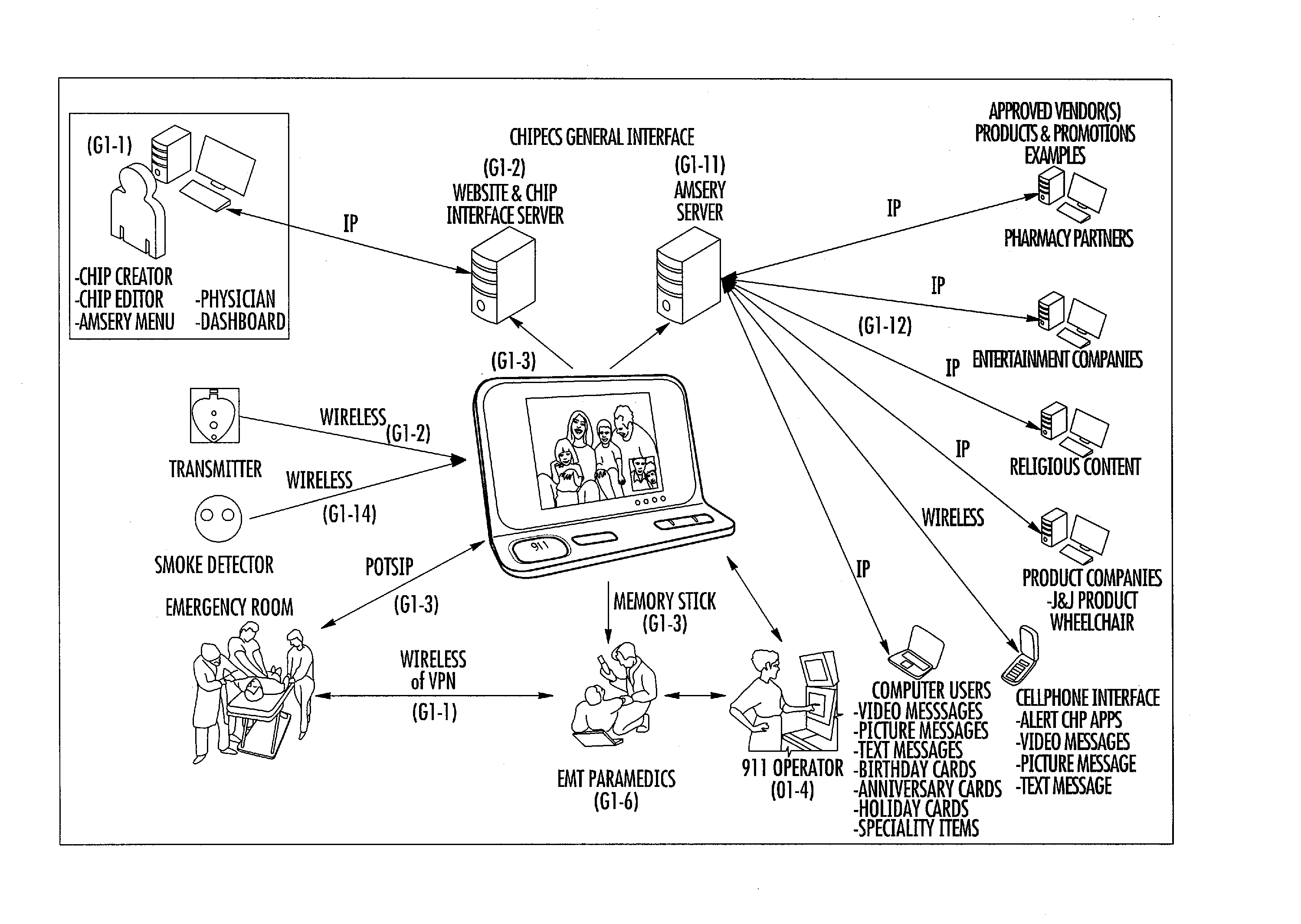Critical health information profile and emergency communication system
a technology of critical health information and emergency communication system, applied in the field of emergency communication, can solve the problems of no known system that can access the emergency system directly, loss of life, etc., and achieve the effect of reducing costs and reducing costs
- Summary
- Abstract
- Description
- Claims
- Application Information
AI Technical Summary
Benefits of technology
Problems solved by technology
Method used
Image
Examples
first embodiment
[0078]Referring to FIGS. 3A-3E, set forth is a transmitter (30) having a Call Button (31) to activate the transmitter and send a signal to the base unit starting the 9-1-1 calling sequence. A Stop Button (32) sends a transmission to the base unit to stop the 9-1-1 call. Holding the button for five seconds, along with the Stop button on the base unit digitally ‘pairs’ the two devices to each other. An LED Signal Indicator (33) indicates that the device is active and can be tested by pressing either the Call or Stop button. The transmitter (30) can be attached to a line (35) for hanging about the User's neck, or attached to a wrist band (36) where it can be worn like a bracelet. Alternative connection attachments allow coupling to a ring (37) for use as a key chain or a clip (38) for attachment to a belt. The transmitter includes a USB connection port (39) allowing storage of medical information. The device can be in the form of a pendant or a watch. Its operation can be activated by ...
second embodiment
[0079]Referring to FIGS. 4A-4E, set forth is a transmitter (40) having a Call Button (41) to activate the transmitter and send a signal to the base unit starting the 9-1-1 calling sequence. A Stop Button (42) sends a transmission to the base unit to stop the 9-1-1 call. Holding the button for five seconds, along with the Stop button on the base unit digitally ‘pairs’ the two devices to each other. An LED Signal Indicator (43) indicates that the device is active and can be tested by pressing either the Call or Stop button. The transmitter (40) can be attached to a line (45) for hanging about the User's neck, or attached to a wrist band (46) where it can be worn like a bracelet. Alternative connection attachments allow coupling to a ring (47) for use as a key chain or a clip (48) for attachment to a belt. The transmitter includes a USB connection port (49) allowing storage of medical information.
third embodiment
[0080]Referring to FIGS. 5A-5E, set forth is a transmitter (50) having a Call Button (51) to activate the transmitter and send a signal to the base unit starting the 9-1-1 calling sequence. A Stop Button (52) sends a transmission to the base unit to stop the 9-1-1 call. Holding the button for five seconds, along with the Stop button on the base unit digitally ‘pairs’ the two devices to each other. An LED Signal Indicator (53) indicates that the device is active and can be tested by pressing either the Call or Stop button. The transmitter (50) can be attached to a line (55) for hanging about the User's neck, attached to a ring (57) for use as a key chain or a clip (58) for attachment to a belt. The transmitter includes a USB connection port (59) allowing storage of medical information.
PUM
 Login to View More
Login to View More Abstract
Description
Claims
Application Information
 Login to View More
Login to View More - R&D
- Intellectual Property
- Life Sciences
- Materials
- Tech Scout
- Unparalleled Data Quality
- Higher Quality Content
- 60% Fewer Hallucinations
Browse by: Latest US Patents, China's latest patents, Technical Efficacy Thesaurus, Application Domain, Technology Topic, Popular Technical Reports.
© 2025 PatSnap. All rights reserved.Legal|Privacy policy|Modern Slavery Act Transparency Statement|Sitemap|About US| Contact US: help@patsnap.com



